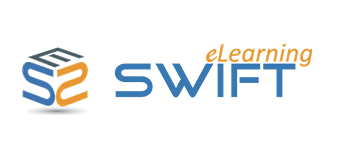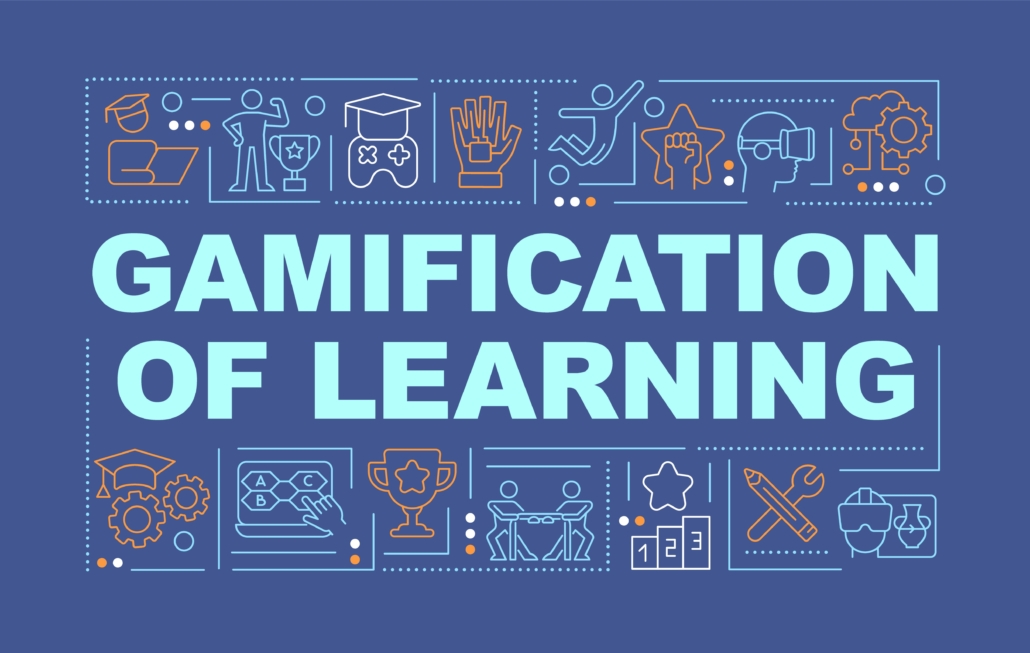Boosting Training Effectiveness with eLearning Gamification
ELearning Gamification – Introduction
eLearning Gamification in the realm of education and training, engagement is key to effective learning. Traditional training methods often struggle to captivate learners and maintain their motivation throughout the process. However, with the rise of eLearning gamification, trainers and educators now have a powerful tool at their disposal to enhance the learning experience and maximize training effectiveness.
ELearning Gamification – the application of game elements and mechanics in non-game contexts – has proven to be a game-changer in the field of eLearning. In this blog post, we will explore the concept of eLearning gamification and discuss its benefits in boosting training effectiveness.
2. Understanding eLearning Gamification
eLearning gamification involves integrating game elements, such as points, levels, badges, leaderboards, challenges, rewards into the training process to create a more interactive and engaging learning environment.
By transforming learning materials into game-like experiences, eLearning gamification motivates learners, enhances their participation, and increases knowledge retention. By integrating gamification into eLearning, traditional educational content is transformed into a game-like experience, making it more enjoyable and motivating for learners.
The goal is to tap into the intrinsic human motivation for competition, achievement, and rewards to encourage active participation and knowledge retention.
ELearning gamification can be applied to various educational contexts, including corporate training, academic courses, language learning, skill development, and more. Its purpose is to make learning enjoyable, increase learner engagement, and enhance knowledge retention by leveraging game-inspired elements and techniques.
Here are some common gamification elements used in eLearning:
2.1 Points and Levels:
Learners earn points for completing activities or assessments and progress through different levels as they accumulate more points. This provides a sense of achievement and advancement. Users earn points and badges for completing tasks, quizzes, or modules. They can accumulate points to unlock higher levels or compete with others on leaderboards.
2.2 Progress Bars and Leveling Up:
Visual indicators, such as progress bars or leveling up, provide a sense of achievement and motivate learners to complete activities and move forward in the course.
2.3 Badges and Certificates:
Learners receive virtual badges or certificates for reaching milestones, mastering skills, or completing courses. These visual representations of accomplishments boost motivation and signify progress.
2.4 Leaderboards:
A leaderboard displays the rankings of learners based on their performance, scores, or completion times. It promotes healthy competition and social interaction among learners.
2.5 Challenges and Quests:
Challenges present learners with specific tasks or quests to complete, often requiring problem-solving or critical thinking. They add an element of excitement and engagement to the learning experience.
2.6 Rewards and Incentives:
Virtual rewards such as unlockable content, bonus levels, or access to additional resources can motivate learners to actively participate and excel in their studies.
2.7 Quizzes and Assessments:
Transforming traditional quizzes and assessments into interactive game-like experiences can increase learner engagement. Adding timers, scoring systems, or incorporating game mechanics like “lives” or “power-ups” can make the experience more enjoyable.
2.8 Feedback and Progress Tracking:
Regular feedback, progress indicators, and performance analytics help learners monitor their advancement, identify areas for improvement, and stay motivated.
2.7 Storytelling and Narratives:
Incorporating storytelling elements or narratives into the eLearning experience can engage learners and make the content more immersive. Learners may progress through a storyline, solve challenges, or make decisions that impact the outcome.
2.8 Simulations and Serious Games:
Simulations and serious games provide learners with realistic scenarios where they can apply their knowledge and skills in a practical and interactive manner. These immersive experiences often include game-like elements such as challenges, rewards, and feedback.
2.9 Social Interaction and Collaboration:
Integrating social features like discussion boards, forums, or multiplayer activities allows learners to collaborate, compete, or share their progress with peers, creating a sense of community and enhancing engagement.
3. Benefits of eLearning Gamification
Gamification enhances the learning experience by incorporating elements such as challenges, rewards, competition, and interactivity.
Here are some benefits of e-learning gamification:
3.1 Enhanced Learner Engagement
Traditional training methods often lack the level of interactivity and engagement required to hold learners’ attention. Lectures and slide presentations can be monotonous and fail to actively involve learners in the learning process.
However, by incorporating game elements, eLearning gamification creates an immersive learning experience that captures learners’ interest and encourages active participation. The interactive nature of gamified training modules leverages the natural inclination towards play and competition, resulting in increased engagement and motivation.
Learners are no longer passive recipients of information but become active participants in their own learning journey.
3.2 Increased Knowledge Retention
The combination of interactive gameplay, challenges, and rewards has a profound impact on learners’ ability to retain information. When learners are actively involved in a gamified learning environment, they are more likely to remember and apply the knowledge gained.
The element of fun and excitement associated with gaming helps reinforce learning and boosts long-term retention. By presenting information in a format that is both entertaining and educational, eLearning gamification enhances learners’ ability to recall and apply what they have learned.
3.3 Personalized Learning Pathways
One of the significant advantages of eLearning gamification is its ability to provide personalized learning pathways.
Traditional training methods often adopt a one-size-fits-all approach, which may not cater to the diverse needs and learning styles of individuals. However, with eLearning gamification, trainers can tailor the learning experience to individual learners’ needs.
By incorporating branching scenarios and adaptive learning elements, trainers can create a dynamic training program that adjusts to the learners’ performance and progress. Learners can progress through the training at their own pace, receive immediate feedback, and access additional resources based on their performance.
This personalized approach enhances the effectiveness of training by addressing individual knowledge gaps and catering to different learning styles.
3.4 Motivation and Goal-Oriented Learning
Motivation plays a vital role in the learning process. Gamification taps into the innate human desire for achievement and recognition. By setting clear goals, providing real-time feedback, and rewarding progress, eLearning gamification fosters a sense of accomplishment and motivates learners to continue their journey.
The inclusion of leaderboards or badges further enhances motivation, as learners strive to outperform their peers and earn recognition for their achievements. The competitive aspect of gamification adds an element of excitement and pushes learners to push their limits, resulting in increased motivation and dedication to the learning process.
3.5 Reinforcement of Desired Behaviors
Gamification can be particularly effective in training programs that aim to develop specific skills or encourage certain behaviors.
By providing immediate feedback, positive reinforcement, and opportunities for practice, eLearning gamification helps learners internalize and apply desired behaviors. For example, in a customer service training program, learners can engage in simulated scenarios where they have to handle difficult customer interactions.
Through the gamified experience, learners can practice and reinforce effective communication skills, problem-solving techniques, and empathy. The immediate feedback provided in the game allows learners to understand the consequences of their actions and make adjustments accordingly.
By repeatedly engaging in these simulated scenarios, learners develop a level of comfort and proficiency in dealing with challenging situations, which can then be applied in real-life scenarios.
3.6 Collaborative Learning and Social Interaction
ELearning gamification can also facilitate collaborative learning and social interaction among learners. Many gamified platforms incorporate social features that allow learners to interact with each other, form teams, and engage in friendly competition.
This collaborative aspect encourages learners to share knowledge, discuss concepts, and collaborate on solving problems. Through social interaction, learners can gain different perspectives, learn from their peers, and develop important teamwork and communication skills.
Collaborative learning not only enhances the overall learning experience but also prepares learners for real-world situations where teamwork and collaboration are essential.
3.7 Real-time Performance Tracking and Analytics
Another advantage of eLearning gamification is the ability to track learners’ performance in real-time and gather valuable data through analytics.
Gamified platforms can capture learners’ interactions, progress, and achievements, providing trainers with insights into individual and overall performance. Trainers can identify areas where learners may be struggling or excelling, allowing for targeted interventions and support.
The data collected through gamified platforms can also be used to analyze trends, assess the effectiveness of training materials, and make informed decisions for future improvements. This data-driven approach enables trainers to continuously optimize the training program and ensure maximum effectiveness.
3.8 Flexibility and Accessibility
ELearning gamification offers flexibility and accessibility that traditional training methods often lack. Learners can access gamified training modules at their convenience, eliminating the need for scheduled in-person training sessions.
This flexibility allows learners to engage with the content at their own pace and revisit materials as needed. Additionally, eLearning gamification can be easily accessed through various devices, such as computers, tablets, and smartphones, making it accessible to a wide range of learners.
4. Conclusion – Boosting Training Effectiveness with eLearning Gamification
ELearning gamification has emerged as a powerful technique for enhancing training effectiveness. By leveraging game elements, trainers and educators can create engaging and immersive learning experiences that promote learner engagement, increase knowledge retention, and motivate learners to achieve their goals.
The benefits of eLearning gamification extend beyond traditional training methods, offering personalized learning pathways, reinforcing desired behaviors, and fostering collaboration and social interaction.
With the ability to track performance and gather valuable data, trainers can continuously improve the training program and ensure its effectiveness. As technology continues to advance, the potential for eLearning gamification to revolutionize training and education is immense.
By embracing this innovative approach, organizations and educational institutions can unlock the full potential of their training programs and maximize the impact of their learners’ development.
5. FAQ’s About Boosting Training Effectiveness with eLearning Gamification
What is eLearning gamification?
eLearning gamification is the process of incorporating game elements and mechanics into online learning experiences to enhance learner engagement, motivation, and knowledge retention. It involves using elements such as points, badges, leaderboards, levels, and challenges to make the learning process more interactive and enjoyable.
How does gamification benefit eLearning?
Gamification in eLearning offers several benefits. It can increase learner engagement by making the learning experience more interactive and immersive. It enhances motivation by tapping into learners’ intrinsic desires for achievement and recognition. Gamification also promotes knowledge retention by creating memorable experiences and providing immediate feedback.
What game elements can be used in eLearning gamification?
Various game elements can be used in eLearning gamification, including points, badges, levels, leaderboards, virtual currencies, challenges, quests, storytelling, rewards, and social interactions. These elements can be combined and customized to suit the specific learning objectives and target audience.
How can gamification be applied in eLearning courses?
Gamification can be applied in eLearning courses by integrating game elements throughout the learning experience. For example, learners can earn points or badges for completing modules or passing assessments.
Leaderboards can be used to display rankings and promote healthy competition. Interactive scenarios or simulations can create immersive learning experiences. Rewards and feedback can be provided to acknowledge progress and encourage further engagement.
What are the potential challenges of implementing gamification in eLearning?
While gamification can be highly beneficial, there are some challenges to consider. Designing effective game elements requires careful planning and alignment with learning objectives. Balancing competition and collaboration can be challenging, as some learners may be more motivated by one or the other.
Additionally, it’s important to ensure that the game elements do not overshadow the learning content, as the primary goal should still be knowledge acquisition.
How can the effectiveness of gamification in eLearning be measured?
The effectiveness of gamification in eLearning can be measured through various metrics. These may include learner engagement levels, completion rates, knowledge retention, performance improvement, assessment scores, and feedback from learners. Learning analytics and data tracking can provide valuable insights into the impact of gamification on learner outcomes.






